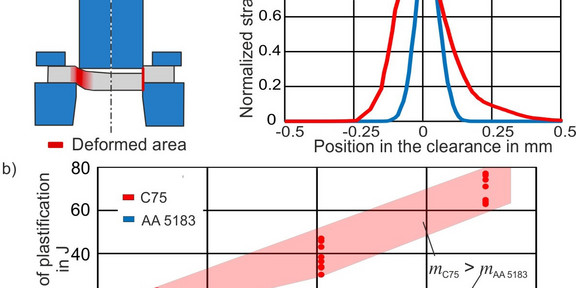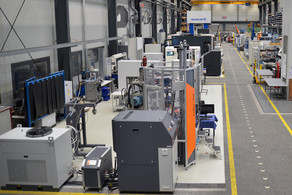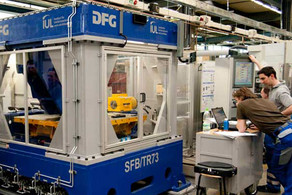Application and Analysis of Adiabatic Blanking
- Sonderverfahren
- Umformtechnische Grundlagenforschung
- Technologieentwicklung

| Funding | German Research Foundation (DFG) |
| Project | 428780322 |
| Contact | Fabian Schmitz M. Sc. |
In adiabatic shear blanking the material is formed more locally due to the higher process speed compared to conventional blanking (see Figure a). With the duration of the impact being short (t ≈ 0.2 ms), heat conduction is not active and accelerates temperature-induced softening of the material in the clearance. Acceleration and force measurements with a high resolution in time are used to determine the energy flow, in particular the conversion of the kinetic energy of the punch into dissipated plastic work of the material (forming energy) during the process. The forming energy required for adiabatic shear blanking increases with the initial energy of the machine and, hence, with the process speed. For materials with a low strain rate sensitivity m the increase of required energy for plastification is almost constant (see Figure b). If an adiabatic shear band is also formed, the dissipated plastic work of the material increases significantly. The project is conducted in cooperation with the Institute of Materials Science and Engineering (LWW) at TU Chemnitz.







![[Translate to English:] [Translate to English:]](/storages/iul-mb/_processed_/0/f/csm_Forschung1_2880x640_patrick_7b98a9cf47.png)